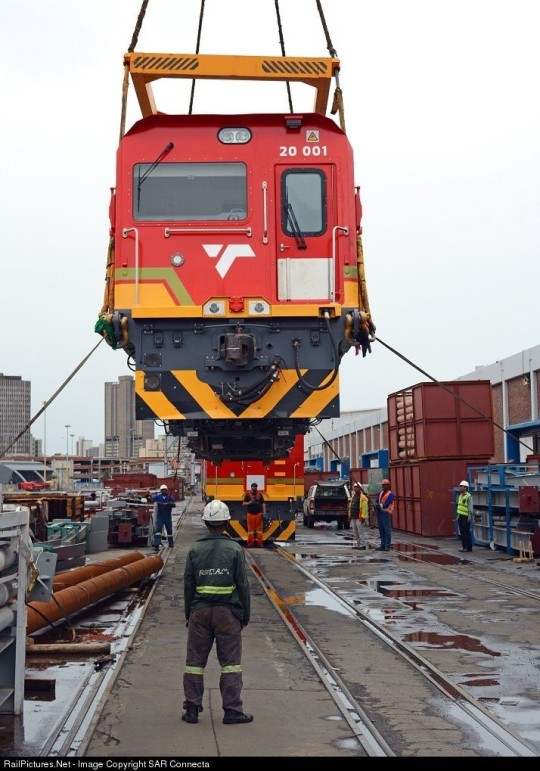#rail transportation
Explore tagged Tumblr posts
Text

923 notes
·
View notes
Text
It's so possible from so many places
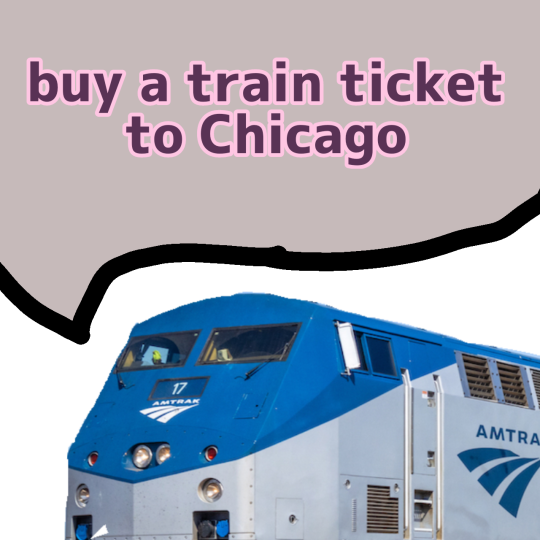
@amtrak-official
396 notes
·
View notes
Text
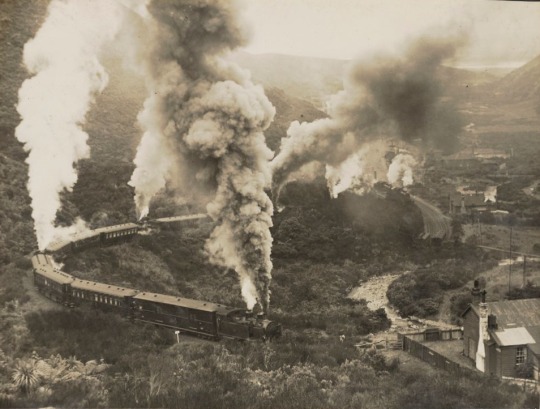
Train on the Remutaka Range, 1925-1935
124 notes
·
View notes
Text
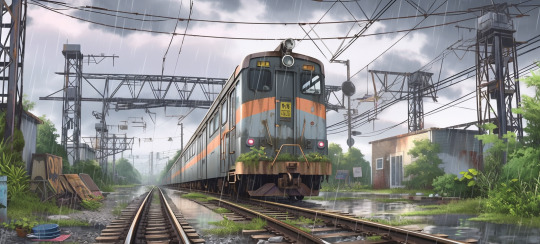

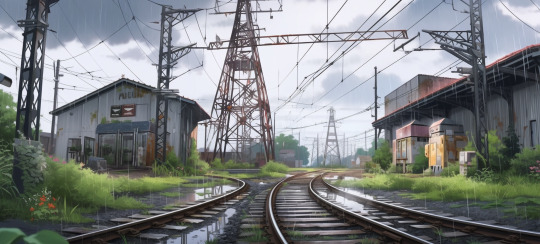



Interstitial Spaces - Industrial Decay
#concept art#urban decay#industrial#anime style#industrial landscape#rail transportation#railway#cyberpunk
169 notes
·
View notes
Note
I know this is a very minor criticism compared to the racism, transphobia, genocide apologism, legitimising of fascist violence etc but something else I've noticed about the BBC recently is they just do not bother putting any effort into any article relating to the railways
So many use outdated images, muddle simple details, and often outright just act as a platform for opponents to any rail project - see this one for example in which the 'analysis' from the BBC completely derails the focus of the article to talk about roads instead https://www.bbc.co.uk/news/articles/cx2mnz9xejyo - as a transport advocate it pisses me off no end
Look ofc there are bigger and smaller issues but those are features of subpar journalism! the news that peddles itself as peak journalism and objective fact to keep people informed invested in its representation of issues should not be muddling details or using misleading images! I don't have the knowledge of rails or transportation infrastructure generally to add much to this but I welcome any details.
The aforementioned "analysis" on an article headlined "Railway sorely in need of investment, study finds" is below for the curious.

#bbc news fail#bbc news#online news#bad reporting#bbc journalism#bbc reporting#bbc#rail transportation#in-a-state-of-trance#mail room
3 notes
·
View notes
Text
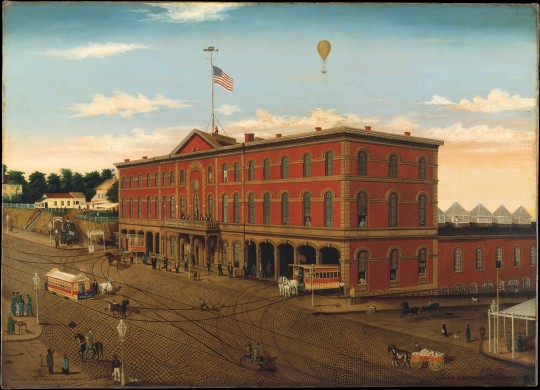
The Third Avenue Railroad Depot, William H. Schenck, ca. 1859-60
#art#art history#William H. Schenck#cityscape#New York City#railroads#rail travel#rail transportation#American art#19th century art#oil on canvas#Metropolitan Museum of Art
48 notes
·
View notes
Text
YES! YES! Fuck you Hochul and fuck you car commuters. Stop shitting up the city with your damn cars and take the train.
#congestion pricing#nyc#kathy hochul#urbanism#public transit#commuter#mass transit#rail transportation#fuck you hochul#fuck you staten island#eat a tick outlying counties#you benefit from the city and its infrastructure#city life#new york city#manhattan#primary challenge hochul
1 note
·
View note
Text

I'm still slowly working my way through editing all the still images, from Warley at Statfold, but just by way of a hint of what's currently going through the sausage machine, here's the three photos I took of the model that was probably my greatest reason for going - a static display model of Brunel's experimental atmospheric railway. This used steam power to pump air out of a tube running between the rails, into which was inserted a piston connected to the train through a slot sealed off by continuous valves. The piston which would be pushed along by the difference in air pressure, pulling the train along. Unfortunately, however, the system's underpowered specifications, combined with continual malfunctioning of the continuous valve system led to the mechanism benig abandoned. It does, however, illustrate the incredible ingenuity and innovation of the 19th century, even if some if not many innovations ultimately proved impractical, not entirely unlike some of the crazy ideas we see floating around the tech space nowadays.


#history#model railway#Great Britain#atmospheric railway#Warley at Statfold#innovation#Victorian Era#Isambard Kingdom Brunel#Brunel#railway engineering#historical photography#heritage#Industrial Revolution#digital content#scale model#steam power#gadgetbahn#photography#rail transportation#experimental railway#Brunel's Atmospheric Railway
0 notes
Text
Navigating Urban Freight Challenges: Leveraging Rail Logistics in Mumbai
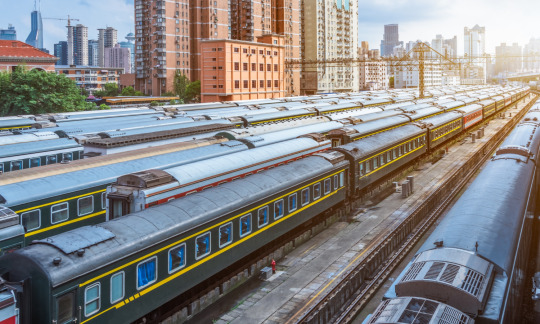
In the bustling metropolis of Mumbai, where the rhythm of life moves at a frenetic pace, the efficient movement of goods is essential to keep the city functioning smoothly. However, navigating the urban freight challenges inherent in such a densely populated and bustling city can be a daunting task. Fortunately, rail logistics presents a viable solution to many of these challenges, offering a sustainable and efficient means of transporting goods within and around Mumbai. In this article, we'll explore how rail logistics in Mumbai is helping businesses overcome urban freight challenges while enhancing the city's transportation infrastructure.
Understanding Urban Freight Challenges in Mumbai
Mumbai, often referred to as the "City of Dreams," is a melting pot of cultures, commerce, and aspirations. Its vibrant economy is fueled by a constant influx of goods ranging from consumer products to industrial raw materials. However, the city's dense population, limited road infrastructure, and congested streets pose significant challenges to the efficient movement of freight.
Traffic Congestion: Mumbai's roads are notorious for their congestion, especially during peak hours, exacerbating delivery delays and increasing transportation costs.
Air Pollution: Heavy traffic congestion contributes to air pollution, adversely affecting public health and the environment.
Limited Road Infrastructure: The city's narrow streets and densely populated neighborhoods limit the capacity for truck transportation, leading to logistical inefficiencies.
Leveraging Rail Logistics for Urban Freight
Rail logistics offers a compelling alternative to road transport, particularly in urban environments like Mumbai. By leveraging the extensive railway network in the city, businesses can overcome many of the challenges associated with urban freight movement.
Efficient Use of Space: Rail transport requires less space compared to road transport, making it ideal for densely populated urban areas like Mumbai. Railways can carry large volumes of freight in a single trip, thereby reducing congestion on the roads.
Reduced Environmental Impact: Rail transport is inherently more sustainable than road transport, emitting fewer greenhouse gases and pollutants per ton-mile of freight transported. By shifting freight from trucks to trains, businesses can contribute to mitigating air pollution and combating climate change.
Reliable and Timely Delivery: Railways operate on fixed schedules, offering a reliable mode of transportation for freight. Unlike trucks, which are susceptible to traffic congestion and delays, trains adhere to their timetables, ensuring timely delivery of goods.
Cost-Effectiveness: Rail transport is often more cost-effective than road transport for long-distance freight movement. By utilizing rail logistics, businesses can reduce transportation costs and improve their bottom line.
The Role of Rail Logistics in Mumbai's Transportation Infrastructure
Rail logistics plays a crucial role in Mumbai's transportation infrastructure, facilitating the movement of goods within the city and beyond. The Mumbai Suburban Railway, also known as the local train network, serves as a lifeline for millions of commuters and also accommodates freight traffic during off-peak hours.
Integrated Multimodal Transport: Rail logistics in Mumbai is part of an integrated multimodal transport system that includes railways, roads, ports, and airports. This interconnected network allows for seamless movement of goods from production centers to distribution hubs and ultimately to consumers.
Last-Mile Connectivity: While rail transport excels in long-distance freight movement, it may require supplementary modes of transport for last-mile connectivity. In Mumbai, trucks and other vehicles provide the crucial link between railway terminals and final destinations, ensuring that goods reach their intended recipients.
Infrastructure Development: Investments in rail infrastructure, such as the development of dedicated freight corridors and modernization of railway terminals, are essential for enhancing the efficiency and capacity of rail logistics in Mumbai. These infrastructure projects aim to reduce congestion, improve connectivity, and support economic growth.
Conclusion
In conclusion, rail logistics holds immense potential for addressing urban freight challenges in Mumbai. By leveraging the city's extensive railway network, businesses can overcome the limitations of road transport and enhance the efficiency, reliability, and sustainability of freight movement. As Mumbai continues to evolve and grow, rail logistics will play an increasingly vital role in supporting its dynamic economy and improving the quality of life for its residents. Embracing rail logistics is not just a matter of convenience; it's a strategic imperative for building a more resilient and sustainable future for the City of Dreams.
1 note
·
View note
Text

8 notes
·
View notes
Text
Next Stop, Sustainability! — How Automated Trains Are Transforming Transportation.

In an age of stressful commutes and road congestion, a transformative solution has emerged: fully automated train systems. Hawaii’s H-1 freeway, notorious for its traffic jams, has found relief in the form of the Skyline, the U.S.’s first fully automated elevated rail system, operational since June 30, 2023. This breakthrough innovation represents a global shift toward autonomous mass transit, exemplifying Hitachi’s expertise.
Automated trains offer enhanced safety, relying on algorithms and sensors for real-time monitoring, minimizing human error and accidents. Their eco-friendly impact is profound, emitting up to nine times less CO2 and particulate matter than road transport, contributing significantly to reducing greenhouse gas emissions. Additionally, these trains drive smart city investments, integrating seamlessly into data-driven infrastructures, ensuring faster travel times and energy-efficient operations.
Toward Smarter Rail Mobility — The Hitachi Way
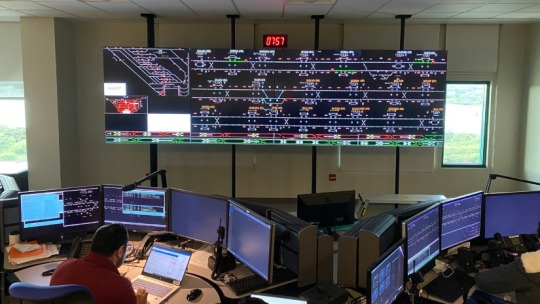
Hitachi Rail specializes in designing, building, and operating autonomous metro systems globally. One of its notable projects is the Cityringen metro in Copenhagen, which utilizes the advanced CBTC (Communication-Based Train Control) technology to enable automated train operations. This innovation has resulted in improved reliability, more frequent services, and shorter waiting times for passengers.
Smart rail imparts several benefits — passengers can enjoy a seamless experience, from Wi-Fi connectivity to enhanced accessibility, making journeys more comfortable and convenient. By collaborating with governments and stakeholders globally, Hitachi ensures a thorough assessment of feasibility, required infrastructure upgrades, and effective engagement with stakeholders.
Ready to embark on this transformative journey? Learn how Hitachi is connecting the future of mobility.
Discover how Hitachi is ushering in a green mobility future by leveraging its expertise in digital and transportation technologies
#automated trains#autonomous trains#driverless rail#train control center#HART#skyline#sustainable transport#sustainable mobility#decarbonization#smart rail#hitachi rail#rail transportation#sustainable railway#honolulu
0 notes
Text
"On Track to Progress: EIIR Trends Navigates the Dynamic Landscape of the Railway Sector"
Embark on a journey through the evolving railway sector with EIIR Trends. Our platform delves into the transformative trends and innovations propelling the railway industry forward. From advancements in high-speed rail technology to sustainable transportation initiatives, EIIR Trends Railway Sector provides a comprehensive view of the dynamic landscape.
Explore in-depth analyses covering infrastructure developments, rolling stock innovations, and digitalization trends shaping the future of rail transport. Whether you're a railway professional, industry stakeholder, or enthusiast, our curated content offers strategic insights into the forces driving progress within this crucial sector. Discover the intersection of technology, sustainability, and efficiency as the railway sector undergoes a profound transformation.
0 notes
Text
Windslar M-Train Station (NO CC)

Windslar M-Train Station is the northern terminus of the Windslar-Lykke-Britechester line in the Windenbahn high-speed rail network. Originally built in 1998 through a collaboration between Lesmana Enterprise and the Windenburg Royal Ministry of Transport, the station now stands as a state-of-the-art transportation hub. It houses a dedicated maglev rail for the A12 Seraphim, the fastest train in the Western SimWorld, offering seamless, high-speed connections across the region. With premium waiting lounges, a spacious café, a capsule hotel for overnight stays, digital information kiosks, automated ticketing, and high-speed Wi-Fi, Windslar M-Train Station ensures a smooth and comfortable travel experience for all passengers.


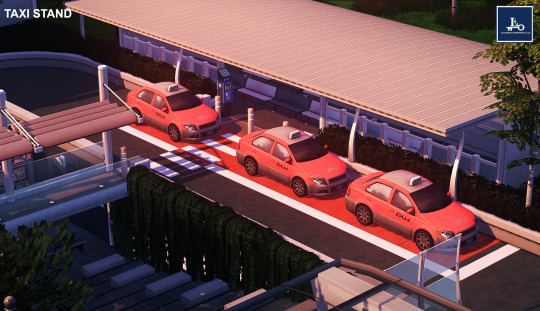

New Interior Facelift
The Windslar M-Train Station interior blends modern sophistication with passenger comfort, offering a seamless travel experience. The spacious concourse features sleek ticketing kiosks, automated turnstiles, and a real-time departure board in Simlish for easy navigation. Soft ambient lighting, elegant architectural details, and lush greenery create an inviting atmosphere, while premium seating areas provide relaxation before boarding. A cozy café (POLA Coffee) serves freshly brewed coffee and local delicacies, making it a perfect stop for commuters and travelers alike. With its futuristic design and high-tech amenities, Windslar Station embodies the pinnacle of efficient and luxurious transit in the Windenbahn network.
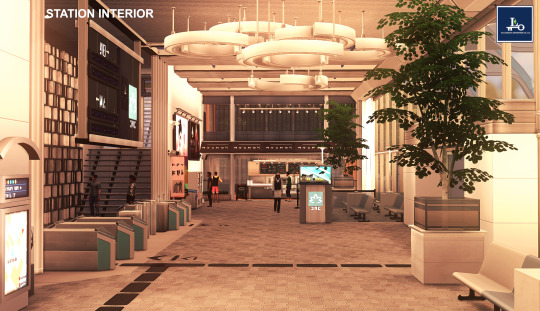



Windslar Greets You
The peron offers a breathtaking view of the lush countryside, ready to greet travelers with its serene landscapes.


The A12 Seraphim is a masterpiece of speed and comfort, soaring across the landscape at an impressive 510 km/h. Inside, the cabin is designed for both luxury and efficiency.
Seraphim Business Class
Step into the A12 Seraphim Business Class, where elegance meets high-speed innovation. Plush black leather seats with personal entertainment screens ensure a serene and private travel experience. Soft ambient lighting enhances the cabin’s refined atmosphere, while panoramic windows frame breathtaking countryside views at unmatched speeds.

Seraphim Coach Class
For those who seek both comfort and affordability, the Seraphim Coach Class provides spacious seating with deep blue ergonomic chairs designed for long-haul relaxation. Overhead luggage compartments ensure a clutter-free space, while the warm glow of the ceiling lights adds to the welcoming ambiance.

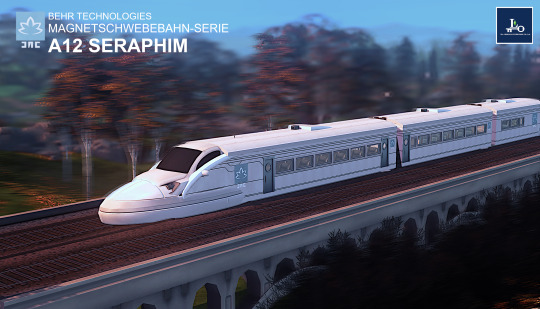
BONUS: A12 Seraphim on Rail, Photo op Lot
Capture the thrill of high-speed travel with the A12 Seraphim on Rail photo op lot! This scenic location is the perfect backdrop for Sim stories, machinima, and breathtaking screenshots.
Positioned along an elegant elevated railway, the A12 Seraphim glides through a picturesque landscape, surrounded by lush greenery and golden-hour lighting that enhances every shot. Whether you're creating a travel blog, showcasing futuristic transportation, or simply looking for a cinematic rail-themed scene, this lot offers stunning views and dynamic compositions.
Set up your Sims for dramatic departures, high-speed action shots, or tranquil countryside journeys—all with the A12 Seraphim as the star.

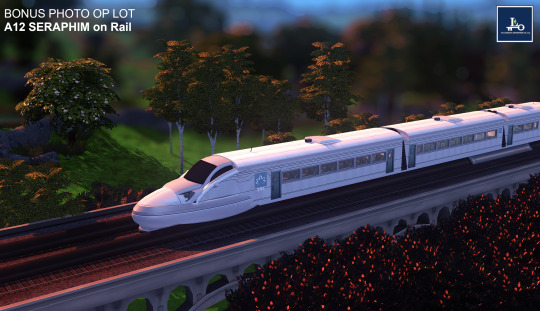

Techincal Informations
Packs Used


Download via SFS
Windslar M-Train Station : Download A12 Seraphim Photo op : Download
Sul Sul!,
Lesmana Enterprise Co., Ltd.
#simblr#lesmana-enterprise-ltd#sims 4#sims 4 screenshots#sims 4 aesthetic#ts4 simblr#sims 4 build#download#sims 4 no cc#showusyourbuilds#sims 4 tray#travel#station#high speed rail#get together#windenburg#64x64#no cc#maxis match#sims 4 cafe#cafe#train#transportation#airport#sims 4 airport
2K notes
·
View notes
Text
Rail travel in England and Wales.
Close ticket offices eliminates 12% (one eighth) of passengers, means losing 12%(one eighth) of ticket revenue. Upswing in fare non-payment has been clocked to be a rapid 25% increase in recent identical implementation.
Which means 88% of passengers have to pay more very quickly to make up that gap. And even slightly more very quickly so 14%...
A 14% fare price rise (slow or fast) would cause unemployment and a rise in working from home, which would irritate the city office landowners... a proven lobby that the Tories pay attention to. So they stopped the closure of over a thousand rail ticket offices. For now.
For now.
Stop forcing disablement onto people. Allow accommodation for different physicalities to remain. Stop the constant upmove of profit and lack of investment in stock line and comms. Allow rail usage to be helpful to the user not a constant money mill.
Other countries manage better. We see this.
#i am begging you to stop voting them in#rail transportation#uk infrastructure is failing#thatcherism
0 notes
Text
Unlocking Efficiency: How Daniel Reitberg's AI Expertise Improves Train Scheduling and Speed Management in the Railway Industry

Enhancing Train Scheduling Accuracy
In the dynamic world of railways, precise train scheduling is crucial for ensuring smooth operations. Daniel Reitberg, an accomplished AI expert, explores the transformative role of AI in optimizing train schedules. By leveraging advanced algorithms and real-time data, AI systems can analyze factors such as passenger demand, track conditions, and weather patterns to generate efficient and reliable schedules. With AI-powered train scheduling, delays can be minimized, capacity can be maximized, and the overall passenger experience can be significantly improved.
Maximizing Train Speeds for Efficient Operations
Managing train speeds is another critical aspect of railway operations, and AI offers innovative solutions. Daniel Reitberg highlights how AI technologies enable the optimization of train speeds to enhance efficiency and safety. By analyzing various parameters such as track conditions, train weight, and traffic congestion, AI algorithms can dynamically adjust train speeds to ensure optimal performance. This intelligent speed management not only reduces energy consumption but also improves punctuality, minimizing the risk of accidents and enhancing overall operational efficiency.
Predictive Maintenance for Reliable Service
Effective maintenance is vital for ensuring the reliability of railway systems. Daniel Reitberg delves into the application of AI in predictive maintenance, which can proactively identify potential issues and prevent unexpected breakdowns. By analyzing sensor data from trains and tracks, AI algorithms can detect early warning signs of equipment failure or track abnormalities. This enables timely maintenance interventions, reducing service disruptions and ensuring a safe and reliable railway network for passengers and freight transportation.
Data-Driven Decision Making for Railway Operators
In today's data-rich environment, making informed decisions is crucial for railway operators. Daniel Reitberg emphasizes the power of AI in providing actionable insights through data analysis. By processing vast amounts of data from various sources, including train operations, maintenance records, and customer feedback, AI systems can generate valuable intelligence. This empowers railway operators to optimize resource allocation, improve customer satisfaction, and make strategic decisions that positively impact the bottom line.
In conclusion, Daniel Reitberg's expertise in AI brings immense value to the railway industry, specifically in improving train scheduling and managing train speeds. Through accurate train scheduling, AI ensures efficient operations and enhances the passenger experience. By optimizing train speeds, AI maximizes efficiency while prioritizing safety. Additionally, AI enables predictive maintenance and data-driven decision making, contributing to the overall reliability and success of railway operations. As technology continues to advance, the integration of AI in the railway industry will play a pivotal role in shaping a smarter, more efficient, and customer-centric future of transportation.
#artificial intelligence#machine learning#deep learning#technology#rail industry#rail transportation
1 note
·
View note
